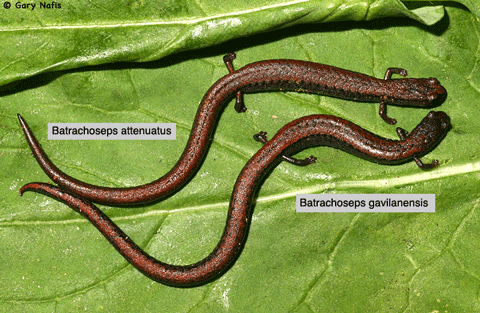Results so far in animals suggest the major limitation to DNA barcoding is very young species pairs. Young species pairs may not have accumulated enough differences in the 648 bp barcode region of COI to form distinct lineages in neighbor-joining analysis. Because overall rates of mitochondrial DNA evolution differ among animal groups, and the relative rates of specific mitochondrial genes also differ, it may turn out that COI barcoding will be more effective in separating young species pairs in some groups than in others.
20 My of genetic divergence and morphologic stasis
In April 2006 Systematic Biology Mueller compares complete mitochondrial genomes of 27 salamander species. The genetics of salamanders are particularly important as they are notoriously difficult to distinguish and classify due to morphologic stasis and frequent homoplasy. Many new species of salamanders have been discovered and described on the basis of mitochondrial divergence. Mueller found that COI has the highest rate of evolution among all mitochondrial genes in salamanders, suggesting it will be especially effective at resolving young species in this group. Despite these very encouraging results, the paper ends with a worried discussion about using COI for DNA barcoding of salamanders, because its evolutionary rate varies between lineages.
A better appreciation of the power of a standardized genetic approach for amphibians is Ron et al.’s paper in May 2006 Molecular Phylogenetics and Evolution which uses mitochondrial DNA to look at phylogeny and new species in the Neotropical tungara frog genus Engystomops. The authors observe that “the use of genetic markers in systematics has an enormous potential to facilitate the global inventory of biodiversity”, and conclude, based on their results and those in similar studies, that “the increasing use of molecular techniques will lead to the discovery of a vast number of species of Neotropical amphibians.”
1 thought on “COI evolves rapidly in salamanders, helping distinguish and discover species, still some taxonomists worry”